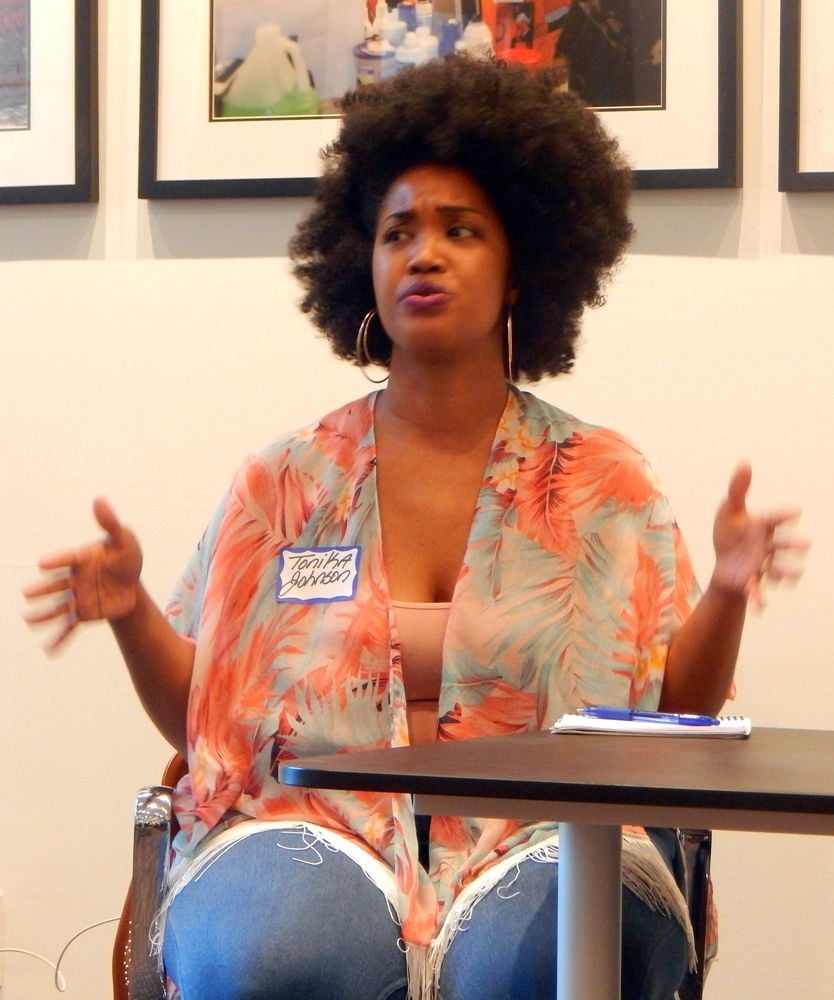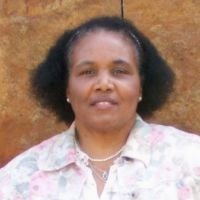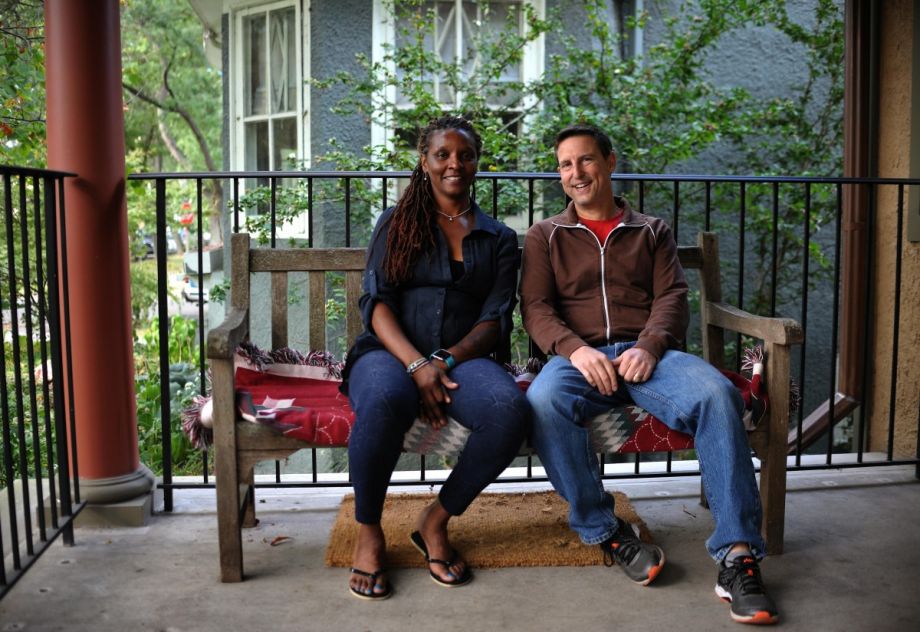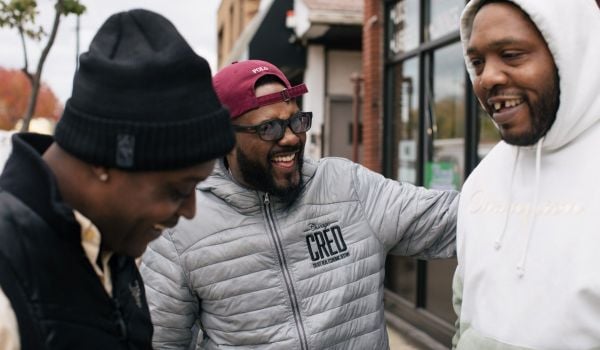As a high school student living in the Englewood neighborhood, on Chicago’s south side, artist and photographer Tonika Lewis Johnson noticed the continuity of several of the city’s street names on her daily commute to Lane Technical College Prep High School, located on the city’s north side. The character of the streets, however, varied widely going from south to north.
“I definitely noticed those inequities. Because if you get off the train stop at Addison and take the [westbound] bus, essentially from the lake going all the way to Western [Avenue], you run into the exact same streets that exist in Englewood — Paulina, Damen, Winchester, Wolcott,” says Johnson. “I just recognized that, oh, these are very different and it just stuck with me.”
Eventually, those impressions manifested themselves in the Folded Map Project, an installation of photographs, a video of interviews with participants of the project and a map display of the city on exhibit till October at the Loyola University Museum of Art, which is free to the public.
“I wanted to create an example of what it looks like to have a direct conversation between people who have been segregated from each other, to see how they struggle with hearing each other describe their neighborhoods, to hear how sympathetic most people are, people who are living in a privileged Chicago and people who are not,” Johnson says.
Many residents of Chicago’s predominately white north side never venture further south than downtown or Soldier Field. Newcomers are often warned away from venturing to the city’s predominantly African American south and west sides. One goal of the Folded Map Project was to address and challenge this circumstance.
“I wanted to remind people who are in a privileged Chicago that you’re living in a small, small fraction of Chicago and you are not allowing yourself to break down stereotypes that you have,” says Johnson. “And that is actually what is perpetuating the issue in Chicago. Chicago is highly segregated and it remains that way because of people getting instructions of where they should or should not go and where they should or should not live.”
The Folded Map exhibit includes photographs of various “map twins,” as Johnson calls them: residents at corresponding addresses on the same or nearby streets located in Englewood and on the city’s north side. The photos illustrate the sharp discrepancies between the city’s north side and the south side, the result of decades of redlining as well as disinvestment in the city’s black and brown neighborhoods, says Johnson.
“I wanted to put that back into the larger Chicago conversation. I know that Englewood and a lot of neighborhoods on the west side are struggling with the same issues of low income, school closings, low home ownership, gun violence — but what really bothered me was the fact that people were completely blaming the neighborhoods for the conditions that lived there instead of recognizing the inequities between the north and south,” Johnson explains. “No other neighborhoods like Chicago’s south and west sides have experienced disinvestment and outright racism and systemic racism that these neighborhoods have had to deal with over decades. And for people to just brush these neighborhoods off like, oh, they’re their own problem. It was just frustrating.”
While no one directly turned her down, several potential map twins have yet to respond to Johnson’s outreach attempts. She obtained enough responses from North Side residents to be able to carry out her project.

Tonika Lewis Johnson speaking at a design workshop in July. (Photo by Audrey F. Henderson)
“It really came down to the streets. I already knew the streets that I wanted to focus on to drive home the point. And it was just like I know people on those streets in Englewood so that’s not really a big issue,” she says. “But up north, I was like, this is going to take some planning. It’s going to take some luck.”
Johnson identified specific blocks on the north side she wanted to get residents from and, with help from Loyola University Chicago, which is located on the north side, she flooded those blocks with information about the project. It was just a waiting game to see who would respond.
In one case, without waiting for a response, Johnson went out to photograph one house on the north side, corresponding to someone she had already picked out on the south side.
“I was literally photographing their house when [Jennifer Chan] came out and was like, ‘What, hello? Why are you taking pictures of my house?’” Johnson recalls. “I told her about the project and she was really interested. She invited me back to their block party the following week.”
Chan and her husband, Wade Wilson, live on the 6300 block of North Hermitage Avenue in the Edgewater community on Chicago’s far north side. For the corresponding location on the south side, Johnson had picked out Nanette Tucker, who lives on the 6100 block of South Bishop in Englewood. Wilson and Tucker became Johnson’s first pair of map twins.
Wilson is an Oklahoma native who has lived in various locations in the United States and abroad. He and Chan returned to Chicago in 2008. They’ve lived in rental properties in Pilsen on the west side and Bridgeport on the south side before purchasing their present home, so the couple had some familiarity with other parts of the city.
Tucker is a Chicago native raised in Bronzeville, on the south side. She moved to Englewood 12 years ago to purchase a home in an area she could afford on her salary. She has some knowledge of the north side due to several years of social service experience, with most of her jobs located in organizations on the north side.
Johnson brought the pair together at Tucker’s home in mid-2017. They sat on Tucker’s front porch and discussed various aspects of living in the city.
“We talked about [how] they can walk out of their front door and have access to auto-mechanic shops, sit-down cafes, grocery stores, well basically anything within minutes,” Tucker says. “Whereas for so many years, Englewood was a food desert. You didn’t have the big chain grocery stores. You had the little corner stores so you couldn’t get fresh produce, things like that.”
Wilson’s visit occurred on a Friday evening when several proms were scheduled. Tucker took advantage of the opportunity to invite Wilson to witness “prom send-off.” The African American tradition includes pre-prom parties with music and couples dressed in their finest gowns and tuxedos — unlike anything that occurs on the city’s north side, according to Tucker.
“I asked Wade ‘Have you ever been on the South Side and seen a prom send-off?’ And (he said) ‘What’s that? ‘And I said ‘Well, it’s better for you to see it than for me to try to explain it to you,’” Tucker says. She walked Wilson around the neighborhood to three prom-send offs going on that day.
Tucker also owns a plot down the street (purchased through Chicago’s Large Lot Program) that she transformed into a flower garden. On another occasion since their first meeting, Wilson drove down to bring Tucker plants for her garden. His presence was initially questioned by some neighbors, but ultimately several bystanders offered to unload his plants, according to Wilson.
“The people on the street are all looking at me going what’s this guy doing? And you could tell they were very suspicious and who could blame them … I mean they don’t see that many white faces down there and here’s this guy pulling up in his car and starting to pull things out of his car and they have no idea who I am,” Wilson says. “The only guy who questioned me openly was a guy who lived right next door to the garden. He finally came out and said ‘I really don’t like cops, what are you doing here?’ I’m like ‘I don’t really know many cops.’ It was funny.”
Tucker also visited with Wilson and his brother on the north side for lunch this past July, and to attend the 2018 Roscoe Village Garden Walk.
“You visibly see the difference,” Tucker says. “There’s no vacant lots over there. No boarded up buildings over there. I mean, over in Englewood one block can have five boarded-up buildings and three vacant lots so how many houses do you count on that block?”
The map twins have future plans for Tucker to visit the Green Mill, also located on the north side, for poetry readings.
“I couldn’t be more surprised and thrilled at how it developed with them. Seeing them meet each other and talking to each other, that’s what moved me and let me know I needed to do more map twins because of how empathetic they were to each other and how genuinely interested they were in learning,” Johnson says.
Johnson has posted a Folded Map online contact form for potential future map twins. So far she has received 176 responses. She plans to expand the project to include addresses on the city’s west side. She hopes to photograph and interview additional pairs of map twins by the fall. An artist talk with Johnson is on schedule at the museum for September 29, which will hopefully include all of the map twins up to that point.
“All of [the map twins] have their own unique connection but everybody was interested in learning more about the other person across the board,” Johnson says.

Audrey F. Henderson is a Chicagoland-based freelance writer and researcher specializing in sustainable development in the built environment, culture and arts related to social policy, socially responsible travel, and personal finance. Her work has been featured in Transitions Abroad webzine and Chicago Architect magazine, along with numerous consumer, professional and trade publications worldwide.















